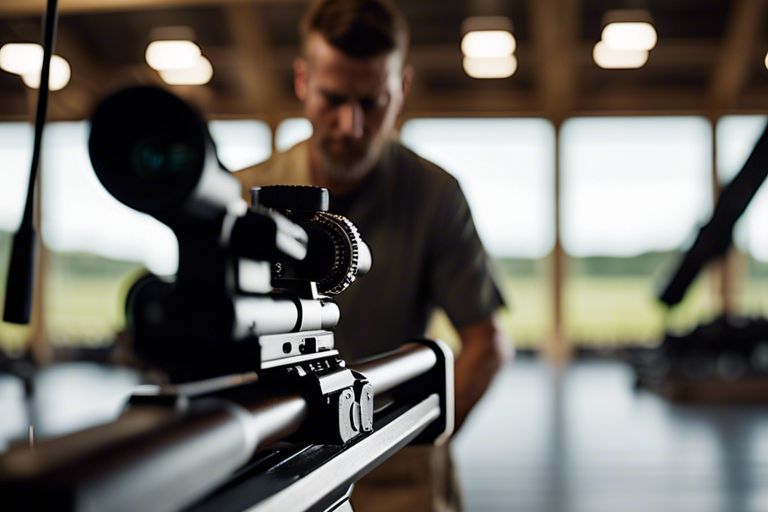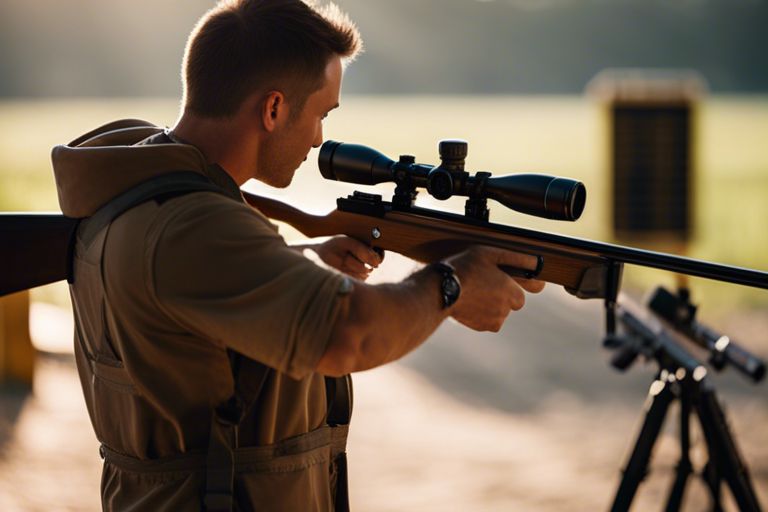This step-by-step guide will show you how to properly sight in your crossbow for accurate and precise shooting. Sighting in your crossbow is crucial for hitting your target consistently and safely. A poorly sighted crossbow can result in missed shots, potential injuries, or even a damaged crossbow. By following these simple steps, you can ensure that your crossbow is correctly sighted in and ready for your next hunting or target shooting adventure.
Contents
- Preparing to Sight in Your Crossbow
- Choosing the Right Location
- Gathering Necessary Equipment
- Step-by-Step Sighting Process
- Initial Setup
- Adjustment Techniques
- Fine-Tuning Your Crossbow Sight
- Factors Affecting Accuracy
- Environmental Influences
- Equipment Maintenance Tips
- Visibility
- Advanced Sighting Tips
- Utilizing Ballistic Reticles and Rangefinders
- Practicing for Precision and Consistency
- Final Words
Preparing to Sight in Your Crossbow
Choosing the Right Location
Now, before you begin sighting in your crossbow, it is crucial to choose the right location. Look for a place that is safe, with a solid backstop to catch your bolts. Make sure the area is free from any obstructions that could interfere with your shooting.
Gathering Necessary Equipment
You will need a few imperative items to properly sight in your crossbow. Make sure you have your crossbow, bolts, a target, a reliable scope or sights, a shooting rest or bench, and any tools required for adjustments. Proper eye protection and hearing protection are also highly recommended for safety.
A shooting rest or bench will help stabilize your crossbow for consistent shooting, while a target will give you a clear point of aim. Having the right equipment will ensure that you can make accurate adjustments to your crossbow for optimal performance.

Step-by-Step Sighting Process
Clearly, when it comes to sighting in your crossbow, following a structured process is crucial. For a detailed guide on how to sight in your crossbow scope, you can refer to How To Sight In Your Crossbow Scope.
Initial Setup
Clearly, the initial setup of your crossbow sight is vital for accuracy. Start by mounting the scope securely on your crossbow and ensuring it is level. Use a vise or a stable platform to keep the crossbow steady during this process. Once your scope is mounted, it’s time to move on to the adjustment phase.
Adjustment Techniques
There’s a variety of adjustment techniques you can use to zero in your crossbow scope. Start by sighting in at a close range, around 10-20 yards, and making adjustments based on where your arrows hit the target. Remember to use the appropriate tools for adjusting windage and elevation settings on your scope.
Setup your target at a distance that allows you to make precise adjustments without the need for constant repositioning. It’s important to take your time with each shot and carefully analyze the impact point before making any adjustments.
Fine-Tuning Your Crossbow Sight
On top of adjusting the windage and elevation settings, fine-tuning your crossbow sight involves ensuring that your scope is properly aligned with your crossbow. Check for any inconsistencies in your shots and make small, incremental adjustments to achieve pinpoint accuracy. Regular practice and patience are key to fine-tuning your crossbow sight effectively.
Windage adjustments are particularly crucial for compensating for the horizontal deviation of your arrows. Make sure to follow a systematic approach and keep track of your adjustments to avoid overcompensating.

Factors Affecting Accuracy
All factors play a crucial role in the accuracy of a crossbow. From environmental influences to equipment maintenance, each aspect can impact your shooting performance. This guide will investigate into the main factors affecting the accuracy of your crossbow setup.
Environmental Influences
On the shooting range or out in the field, environmental conditions can greatly affect the accuracy of your crossbow. Factors such as wind speed, humidity, and temperature can alter the trajectory of your bolt. To minimize the impact of these variables, consider the environment when sighting in your crossbow and adjust your aim accordingly.
Equipment Maintenance Tips
On a regular basis, maintaining your crossbow is crucial for ensuring its accuracy and longevity. Keep your crossbow clean and properly lubricated to prevent any malfunctions. Check that all components are tight and secure before each use. A well-maintained crossbow will not only shoot more accurately but also be safer to operate.
Environmental influences can greatly affect the accuracy of your crossbow. Wind, humidity, and temperature can all impact the trajectory of your bolt. To minimize these effects, consider the environment when sighting in your crossbow and adjust your aim accordingly.
- Regularly clean and lubricate your crossbow
- Check all components for tightness and security
- Store your crossbow in a dry and clean environment
Assume that your crossbow will perform optimally when properly maintained, allowing for consistent and accurate shooting sessions.
Visibility
Proper lighting conditions are crucial for accurate shooting with a crossbow. Inadequate visibility can lead to missed shots or even dangerous situations. Make sure you have clear visibility of your target and surroundings before taking a shot. Proper lighting not only enhances your accuracy but also ensures a safe shooting experience.
Advanced Sighting Tips
- Utilizing Ballistic Reticles and RangefindersClearly, utilizing ballistic reticles and rangefinders can greatly enhance your crossbow shooting accuracy. A ballistic reticle can compensate for bullet drop and wind drift, while a rangefinder helps you accurately measure the distance to your target, allowing you to adjust your aim accordingly.
- Practicing for Precision and ConsistencyOne important aspect of becoming proficient with a crossbow is practicing for precision and consistency. It is crucial to regularly practice your shooting technique to develop muscle memory and improve your accuracy over time.
Utilizing Ballistic Reticles and Rangefinders
Clearly, utilizing ballistic reticles and rangefinders can greatly enhance your crossbow shooting accuracy. A ballistic reticle can compensate for bullet drop and wind drift, while a rangefinder helps you accurately measure the distance to your target, allowing you to adjust your aim accordingly.
Practicing for Precision and Consistency
One important aspect of becoming proficient with a crossbow is practicing for precision and consistency. It is crucial to regularly practice your shooting technique to develop muscle memory and improve your accuracy over time. It is important to focus on consistency in your shooting form, breathing, and follow-through to ensure your shots are precise and effective.
Final Words
As a reminder, sighting in a crossbow is an imperative step to ensure accuracy and success in your hunting or target shooting endeavors. By following the step-by-step guide provided, you can effectively calibrate your crossbow for better performance and precision. Regularly practicing and fine-tuning your sights will help you become a more skilled and confident crossbow shooter. Remember to always prioritize safety and follow manufacturer instructions when adjusting your crossbow. Happy shooting!

Leave a Reply